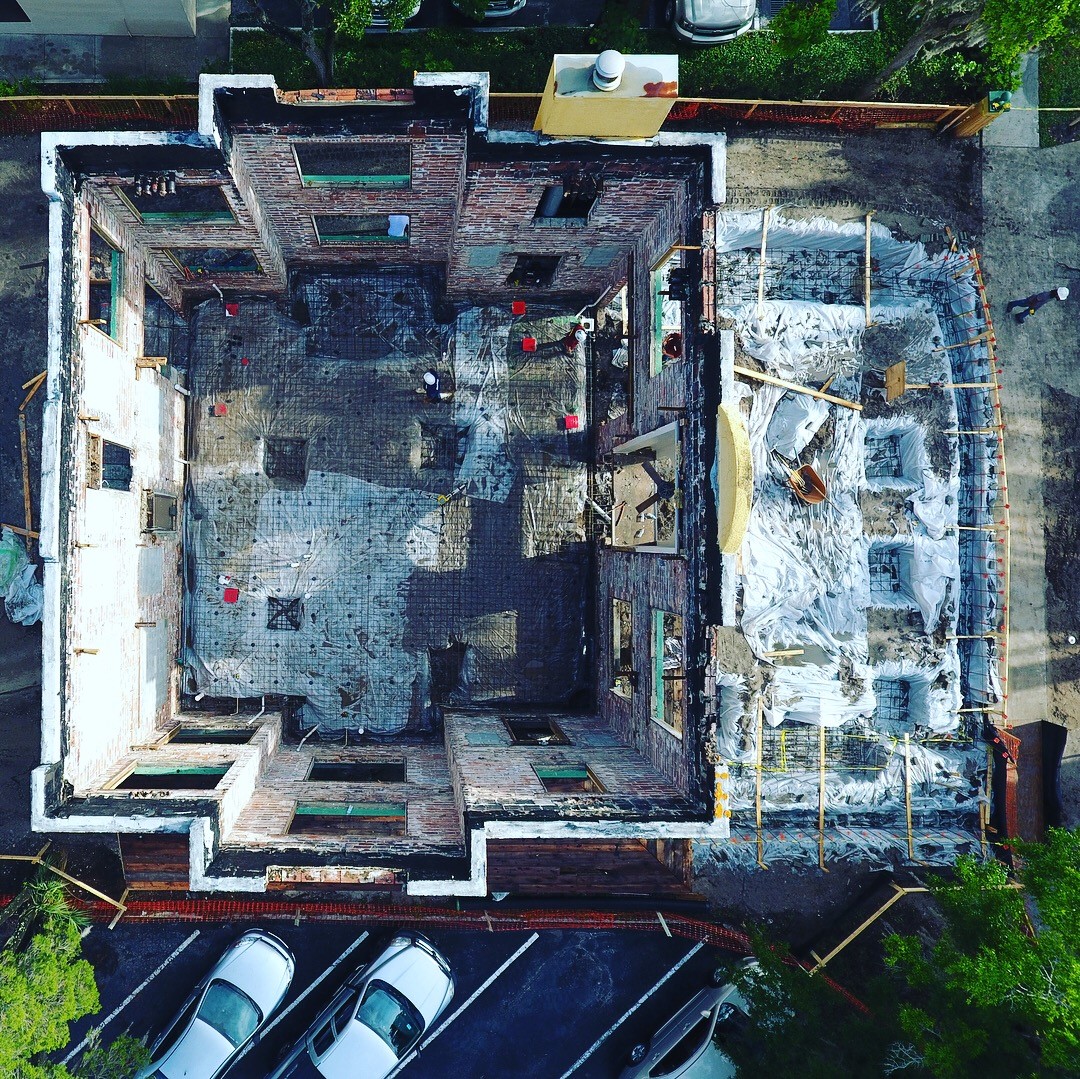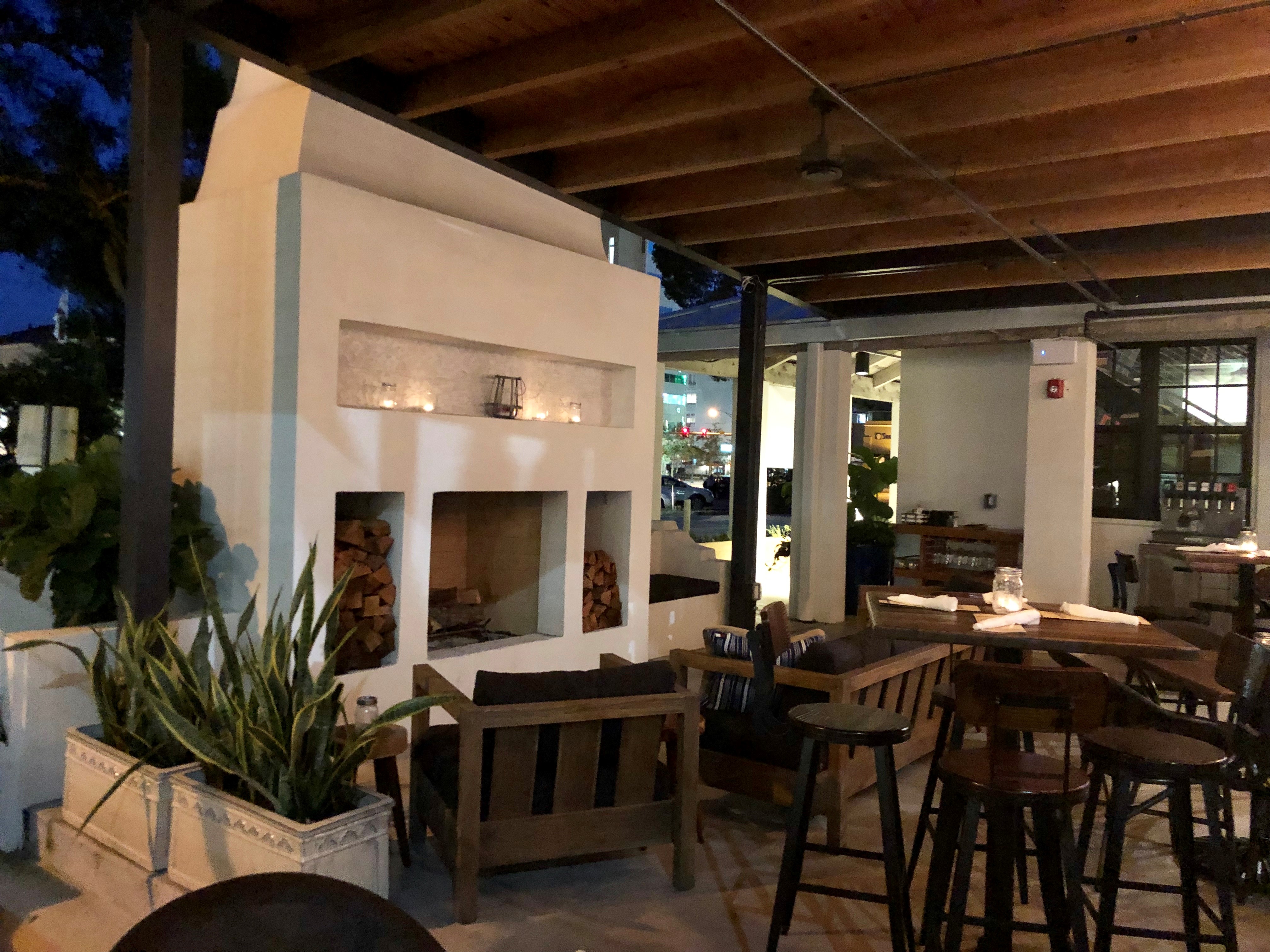Article
Bavaro's: Building a pizza brand on history
Any pizza operator who has ever tried to build a location inside a historic or near-historic location can relate to Dan Bavaro, who spent two years and a whole lot of sleepless nights, bringing his spectacular Sarasota, Florida location of Bavaro's Pizza Napoletana and Pastaria to fruition.

October 9, 2019 by S.A. Whitehead — Food Editor, Net World Media Group
Think Neapolitan pizza and it's hard not to also think of Old Italy. You know, the Naples of centuries ago when the very specific steps of making Neapolitan pies was first developed, a process that is so historic, in fact that it was given UNESCO World Heritage status. Today, that is probably the chief reason that Florida-based Neapolitan pizza brand, Bavaro's has focused on historic buildings as homes for the brand.
 |
| Dan Bavaro, owner of the four-location Bavaro's Pizza Napoletana and Pastaria in Florida.(Photo provided) |
From the imported Italian ovens to the painstaking process of creating these iconic types of pies, Bavaro's — like Neapolitan pizza itself — wants to literally leak tradition and history from the very pores of the brick walls of its stores.
That's not necessarily unusual, of course, for dine-in pizza brands which have long since tried to recreate the romantic and historic feel of Old Italy. But for Bavaro's it means that founder and owner, Dan Bavaro, is very picky about where he puts his restaurants and how they are designed.
Since the brand launched 10 years ago, Dan Bavaro has gone out of his way to connote this sense of tradition, beginning with becoming what he said was the first American importer of the Stefano Ferrara ovens, then later even working to consult dozens of other U.S. brands with similar Neapolitan goals.
The brand began with its first 1,000-square-foot location in downtown Tampa, followed by a store in St. Petersburg, Florida's downtown, then a smaller store at Airside C at the sprawling Tampa International Airport, and finally, at what may be the most historic building of all his locations, in downtown Sarasota, Florida.
And like so many brands that choose the same sometimes rocky route into opening a restaurant in a officially designated historic structure, Bavaro's also has had an interesting journey, first through what was basically the gutting of the nearly 100-year-old building in Sarasota, followed by its thoughtful re-piecing back together in a way that preserves that 1924 character. And that's where we recently struck up a conversation with Bavaro on the ups-and-downs of restaurant historic restoration.
 |
| The "gut": Bavaro's Sarasota about two years ago. (Photo provided) |
Q. Of your current properties, you said the Sarasota Bavaro's restaurant was the first to open in what would be seen, by many, as something of a historic building, given its legacy. Can you tell us about that?
A. The building was built in 1924, originally for housing judges for the nearby courthouse, (and) built using the same materials famous for around the early 1900's, primarily used by the Ringling Family (of Barnum & Bailey fame).
My wife and I purchased this property in 2017 after falling in love with it. We wanted to restore the building and not tear it down, therefore we gutted the building and site leaving the original four walls and 100-year-old front windows. The project took two years.
Q. Wow, that's really impressive, although I'm sure a bit anxiety-producing too. But then, history and tradition are a big part of this brand's personality, so how did that inform you choice of properties, not just in Sarasota, but elsewhere?
A. History, culture, passion and generations is all of what we stand for. We purchase our properties therefore, (so) our business can operate for generations to come. Each city in which we operate from has a diverse culture which, in addition to "Old World" recipes, make an experience memorable.
In all of our restaurants — even the airport. (That's where) we shipped hundred-year-old historical brick from a salvage yard in Chicago to erect the walls of our dining area. We take deep pride in the design and representation of our brand.
Q. Still, many brands today with a dine-in contingent really work hard to project a contemporary look and feel through furnishings, layout, lighting and other interior and exterior features, so do you temper your traditional environments with some sense of the modern?
 |
| "Something old, something new": Bavaro's St. Petersburg shows how the brand blends the old with the new. (Photo provided) |
A. There is some modern influence, but a (good) balance of historic, modern and industrial, due to our markets surrounding us. Hundred-year-old brick, exposed beams, Big Ass (brand) fans, iron ... (are) design(ed) to blend the ambiance together. We feel there is a well-balanced mix as well as a strong representation of the brand even though each property is unique.
Q. What kinds of challenges does an operator, like yourself, face in developing a property within or part of a historic structure, including everything from the property acquisition and build, to the ultimate effect on operations?
A. Sarasota was the most challenging. Although we had a well-executed set of plans approved by the city, as we started construction we faced a lot of structural challenges, additional site work not originally planned and extensive delays for reviewing these updates, due to age of the building.
The city of Sarasota was protective of the integrity of (the) building and property. We faced numerous delays and the project ran over budget by nearly 50%. Combine these, and the time of purchase-to-open was double our normal projects, exceeding two years.
 |
| Painful, but worth it: Fully restored Bavaro's Sarasota opened this May. (Photo provided) |
The financial burden to carry the overruns and property was tremendous for our company to absorb, but we succeeded and opened May 17, 2019.
Q. I'm sure there were plenty of operators' heads nodding in agreement as they read that and thought about their own challenges with this types of properties. But obviously, both they and you feel it is worth it or you wouldn't be doing it. So tell us, how do customers respond to these more antiquated atmospheres and how does that pay off in the bottom line for you as an operator?
A. Guests love all of our properties and each are regularly booked for special events. We are not a strip mall concept. Bavaro's wouldn't thrive in that environment, as it would take away part of our culture. Owning the real estate regardless of it's challenges is extremely beneficial both for the businesses' operating costs and for the generations to come.
Q. What would you tell others pondering similar moves is the single biggest mistake you can make on the road to opening in a historic property?
A. No concessions: Add every single possible piece of construction into the initial set of plans. Do not take a meeting with city officials giving concessions on certain work that might not need to be performed serious(ly). It'll come back to haunt you and cause a burden on time and finances.
Q. Alright then, along that same vein, what then is the single biggest potential benefit of putting a restaurant into this kind of setting, despite the pains of doing so, and will you continue to seek these types of properties for Bavaro's?
A. (The single biggest benefit:) Creating a distinct, memorable environment for your guests. (And regarding continuing the practice)Yes, our brand thrives in the city environment in older buildings. We'll continue to search under-developed areas inside thriving cities throughout Florida. Historic properties have become part of our brand design.
Q. One final question then, what would be your dream location for Bavaro's and why?
A. To own a property and operate a Bavaro's in Manhattan. It's my stomping ground, where I built my first business that gave us the resources to create and open Bavaro's in 2009 when nobody knew what Neapolitan pizza was.
About S.A. Whitehead
Pizza Marketplace and QSRweb editor Shelly Whitehead is a former newspaper and TV reporter with an affinity for telling stories about the people and innovative thinking behind great brands.





